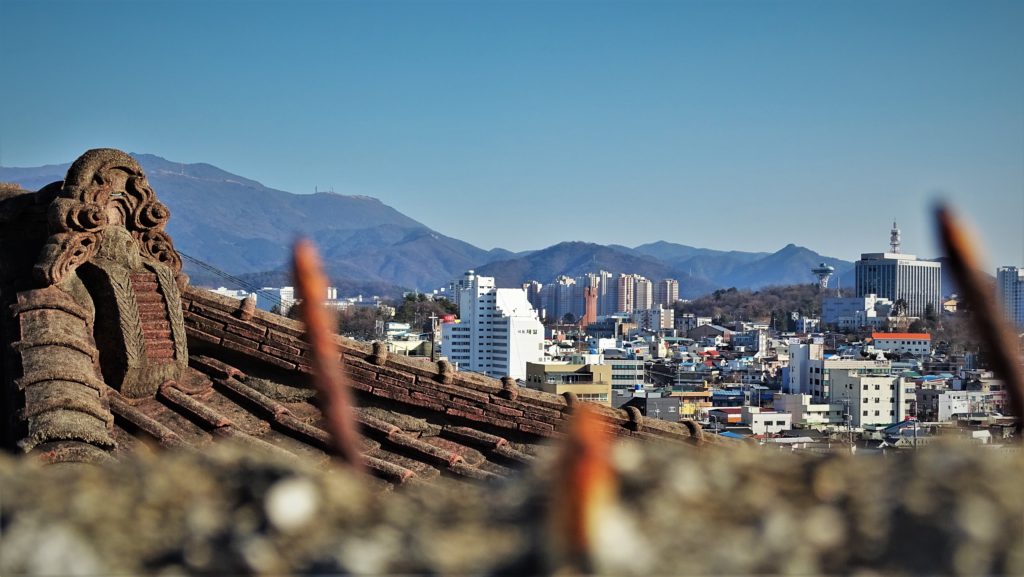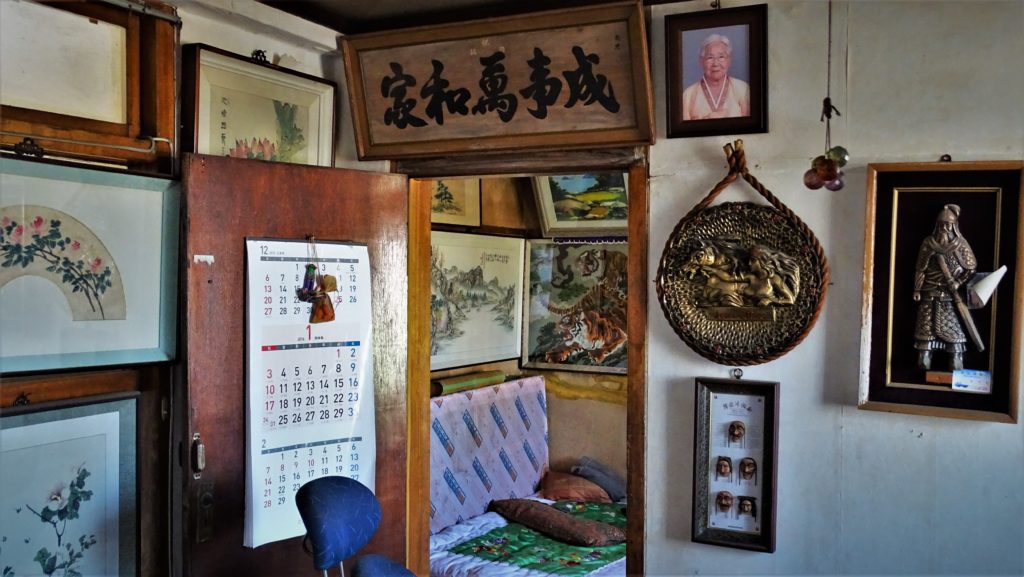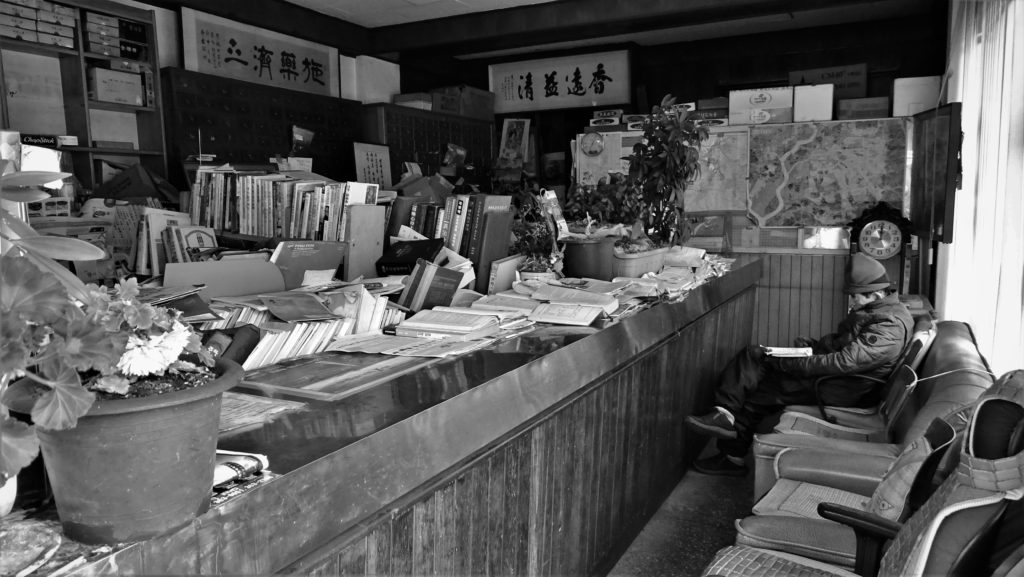The End of Wolsan-dong as We Know It
Written and photographed by Isaiah Winters
Like so many other areas in Gwangju, Wolsan-dong (월산동) is a patchwork of both upwardly and downwardly mobile neighborhoods. Walk a few minutes in one direction, and you’re at MBC’s towering headquarters next to glittering new apartments; walk a few minutes in another, and you’re in a working-class neighborhood mired in various stages of eviction and demolition. The area is very much at odds with itself, which is something I’ve grown to like. But while it remains an eclectic patchwork today, all the arrows point in one direction: The Wolsan-dong of tomorrow is set to be monolithically new.

At least four of the area’s long-awaited redevelopment projects are scheduled, with two already being in full swing. The first of these began last summer, when a neighborhood between Dolgogae Station and Yangdong Market was cordoned off behind high walls of tarp fitted with CCTV cameras and then razed to the ground to make way for new apartments. At present, a second area directly downhill from MBC’s headquarters is midway through its own demolition process. Most of the residents there have already been evicted, although a few, either through sheer doggedness or hopeless destitution, have remained even as the homes around them have been torn down. At least one of these strong-willed residents even continues to do his landscaping every weekend, probably both out of pride and as a way to keep the looters and wreckers at bay.

The particular demolition crew currently at work along the hillside beneath MBC seems to be especially lenient. In addition to giving the last few holdouts extra time and space, it’s raised no high tarps, put up no CCTV cameras, and has given people like me no grief for passing in and out of the area’s many gutted structures. In fact, it seems the crew even went so far as to halt demolition in one particular area after a person, likely a squatter, moved into one of the abandoned houses after Seollal. Responding quickly to the new arrival, the crew spray-painted “A person has been living here since Seollal. Don’t cut the power” along the side of the house. This suggests a more humane demolition process than some that’ve taken place elsewhere across the country. The demolition crew, after all, is made up of regular people, too.

The personalities of the many who’ve been evicted can still be discerned from what they’ve left behind. One of the most eccentric souls to live in Wolsan-dong was an elderly woman whom we’ll just call “Grandma.” Grandma was an avid art collector with a unique flare for interior decorating, and her now vacant house stands as an ephemeral testament to her intense love of the arts. Calligraphy, traditional masks and landscape paintings, abstract art, vinyl records, and even a mounted ferret are all still on exhibit at Grandma’s house today. Though in a condemned neighborhood, her house is one of the very few to not have been ransacked, and I like to think it’s because the demolition crew remains as awestruck as I am by the vestiges of such a unique person. Or maybe they’re just superstitious.

In the two redevelopment zones not yet undergoing eviction and demolition, other unique souls linger along the margins of society. One who stands out is a little 87-year-old man whom I met by accident inside a now defunct pharmacy where, it turns out, he used to sell traditional Korean medicine for 30 years. Today the pharmacy, which looks abandoned but still plays a little jingle whenever the door is opened, functions as both his living space and as an improvised library of sorts where he keeps the impressive array of books he’s collected over his 60-year career as a pharmacist. All alone, he passes the time by opening a book on his lap, often the Bible, and reading himself to sleep. On my most recent visit, I was able to speak to him a bit about the redevelopment going on in the area. As the owner of the building, he said he’d been approached by buyers but that he wasn’t going to sell. “I won’t sell,” he repeated kindly but firmly. I don’t doubt him.

The most haunting encounter my friend Ryan and I had during our time roaming through Wolsan-dong was on a low hilltop that’s barely managed to keep its verdant head above the city’s rising tides of concrete. As we plodded our way up the hill to scout the surrounding area, we encountered a middle-aged man out in the cold clutching a plastic bag. Something was clearly not right with him, so we stopped dead in our tracks to observe. Sitting motionless in the dirt, the man’s glazed eyes seemed to look through us rather than at us. I’d seen a similarly listless gaze in the faces of Romanian street children clutching bags of paint 15 years before – a side effect of huffing. We hightailed it, not seeking definitive answers, although I couldn’t help but wonder what would happen to the most vulnerable souls like him once the area got its upscale makeover.

A few weeks later, we returned to this same low hilltop overlooking much of Wolsan-dong and fortunately didn’t run into anyone on our way up. Cleared of trees, the hilltop is etched with fallow plots of unauthorized farmland resting before this spring’s planting season, which may be its last. Two new apartment complexes are slated to be built adjacent to this hill in the near future – the two said projects not yet underway. With local farmers no longer around to till the soil every year, I imagine the hilltop will be turned into a well-maintained park of sorts, which certainly comes with benefits, like more trees and less plastic trash scattered about. Still, one of the sharpest visual contrasts found within Gwangju proper will likely be gone. It’s this stark patchwork that makes the area so endearing and leaves me feeling lost in Gwangju.
The Author
Originally from Southern California, Isaiah is a Gwangju-based urban explorer who enjoys writing about the City of Light’s lesser-known quarters. When he’s not roaming the streets and writing about his experiences, he’s usually working or fulfilling his duties as the Gwangju News’ heavily caffeinated chief proofreader.







